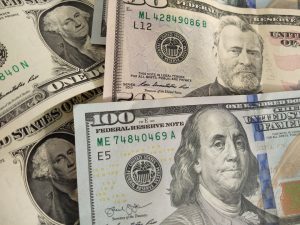The foreign exchange market, commonly known as forex, is the largest financial market in the world with an average daily turnover of $5.1 trillion. Forex trading involves buying and selling currencies with the aim of making a profit. As with any market, forex prices are influenced by a variety of factors, including economic, political, and social factors.
Economic Factors
Economic factors are perhaps the most significant drivers of forex prices. Countries with strong economic growth and stable political environments tend to have strong currencies. This is because investors are attracted to these countries as they offer better returns on investment. Some of the key economic factors that affect forex prices include:
1. Interest Rates: Interest rates are a significant factor in forex pricing. Higher interest rates attract investment, leading to an increase in demand for the currency, which in turn increases its value. Conversely, lower interest rates tend to weaken the currency.
2. Inflation: Inflation is the rate at which the general price level of goods and services in an economy is rising. High inflation rates tend to erode the purchasing power of a currency, leading to a decrease in its value. Therefore, countries with low inflation rates tend to have strong currencies.
3. Economic Data: Economic data such as Gross Domestic Product (GDP), retail sales, and employment figures can have a significant impact on forex prices. Positive economic data tends to strengthen a currency, while negative data weakens it.
Political Factors
Political factors can also have a significant impact on forex prices. Political instability, changes in government policies, and geopolitical tensions can all have an impact on the value of a currency. Some of the key political factors that affect forex prices include:
1. Government Policies: Government policies such as tax rates, trade policies, and regulations can all impact a currency’s value. Investors tend to favor countries with favorable government policies, leading to an increase in demand for the currency.
2. Elections: Elections can also have a significant impact on forex prices. Uncertainty surrounding the outcome of an election can lead to a decrease in demand for the currency, leading to a decrease in its value.
3. Geopolitical Tensions: Geopolitical tensions such as wars and conflicts can also impact forex prices. These tensions can lead to a decrease in demand for the currency of the affected country, leading to a decrease in its value.
Social Factors
Social factors such as demographic changes and cultural shifts can also have an impact on forex prices. Some of the key social factors that affect forex prices include:
1. Demographics: Demographics such as population growth, age, and income levels can impact forex prices. Countries with a growing population tend to have stronger economies, leading to a stronger currency.
2. Cultural Shifts: Cultural shifts such as changes in consumer behavior can also impact forex prices. For example, a shift towards environmentally friendly products can lead to an increase in demand for the currency of countries producing these products.
Conclusion
In conclusion, forex prices are affected by a variety of factors, including economic, political, and social factors. Economic factors such as interest rates, inflation, and economic data are the most significant drivers of forex prices. Political factors such as government policies, elections, and geopolitical tensions can also impact forex prices. Finally, social factors such as demographics and cultural shifts can also have an impact on forex prices. Understanding these factors is essential for forex traders to make informed decisions and achieve success in the forex market.






